The Neighborhood Gardener – September

Florida's Asters
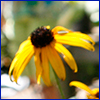 Asteraceae is an enormous family of flowering plants. Daisies, sunflowers, zinnias, marigolds, and more are all grouped together in this category. Florida alone is home to 440 different asters, 331 of which are native species. In fact, 41 species are endemic, found only in the Sunshine State. This new article covers a few of our favorite asters, including several not known for their blooms at all!
Asteraceae is an enormous family of flowering plants. Daisies, sunflowers, zinnias, marigolds, and more are all grouped together in this category. Florida alone is home to 440 different asters, 331 of which are native species. In fact, 41 species are endemic, found only in the Sunshine State. This new article covers a few of our favorite asters, including several not known for their blooms at all!
Winter Squash
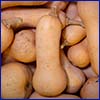 September is squash season throughout Florida. If you time it right, you can raise a crop of winter squashes that will stay fresh in your pantry for months. Popular types of winter squash include butternut, acorn, pumpkin, and spaghetti. Most squashes require pollination by bees; planting flowers nearby may help attract wild bees. This article will walk you through choosing a variety, planting, pollinating, and pest management of these colorful, tasty squashes.
September is squash season throughout Florida. If you time it right, you can raise a crop of winter squashes that will stay fresh in your pantry for months. Popular types of winter squash include butternut, acorn, pumpkin, and spaghetti. Most squashes require pollination by bees; planting flowers nearby may help attract wild bees. This article will walk you through choosing a variety, planting, pollinating, and pest management of these colorful, tasty squashes.
Buttonbush
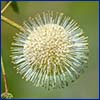 Buttonbush is more than just a roadside shrub. Every part of this native plant is used by pollinators, which makes it a great choice for wildlife reclamation, and its natural wetland habitat make it ideal for a bog garden. Hummingbirds, butterflies, and bees are attracted to the plant's flowers. Buttonbush offers food and shelter for ducks, anhingas, and other native birds. Learn more about Cephalanthus occidentalis.
Buttonbush is more than just a roadside shrub. Every part of this native plant is used by pollinators, which makes it a great choice for wildlife reclamation, and its natural wetland habitat make it ideal for a bog garden. Hummingbirds, butterflies, and bees are attracted to the plant's flowers. Buttonbush offers food and shelter for ducks, anhingas, and other native birds. Learn more about Cephalanthus occidentalis.
Wendy's Wanderings
 I don't know who needs to hear this, but you have some weeding to do. The hot summer temperatures and the abundant rainfall in the last few months have given a needed boost to landscape plants, but the weeds thought the encouragement was for them, too. Some of my old rivals like chamberbitter and doveweed are making a strong showing this year. Read more about Wendy's "green nemeses."
I don't know who needs to hear this, but you have some weeding to do. The hot summer temperatures and the abundant rainfall in the last few months have given a needed boost to landscape plants, but the weeds thought the encouragement was for them, too. Some of my old rivals like chamberbitter and doveweed are making a strong showing this year. Read more about Wendy's "green nemeses."
Plant of the Month: Elliot's Aster
 Elliot's aster (Symphyotrichum elliottii) is a native perennial Florida aster. Its sprawling shape quickly fills gaps in pollinator gardens and is very attractive to bees. Its light purple, delicate blooms emerge in late summer and early fall. It grows happily in USDA Hardiness Zones 8B – 10B and tolerates a range of soils. Elliot's aster looks its best in full sun and doesn't tolerate salt. Make sure you have plenty of space, though; Elliot's aster often reaches heights of 3 to 4 feet. Learn more about other asters native to Florida.
Elliot's aster (Symphyotrichum elliottii) is a native perennial Florida aster. Its sprawling shape quickly fills gaps in pollinator gardens and is very attractive to bees. Its light purple, delicate blooms emerge in late summer and early fall. It grows happily in USDA Hardiness Zones 8B – 10B and tolerates a range of soils. Elliot's aster looks its best in full sun and doesn't tolerate salt. Make sure you have plenty of space, though; Elliot's aster often reaches heights of 3 to 4 feet. Learn more about other asters native to Florida.
Tropical Sod Webworm
 Tropical sod webworms (Herpetogramma phaeopteralis) are most active from spring to fall, although in South Florida they can be found year-round. While they prefer St. Augustinegrass, these small, greenish-gray caterpillars also munch on other turfgrass varieties. You may notice the signs of their destruction in your lawn before you see the pests. In this article we offer strategies to help you manage these very hungry caterpillars.
Tropical sod webworms (Herpetogramma phaeopteralis) are most active from spring to fall, although in South Florida they can be found year-round. While they prefer St. Augustinegrass, these small, greenish-gray caterpillars also munch on other turfgrass varieties. You may notice the signs of their destruction in your lawn before you see the pests. In this article we offer strategies to help you manage these very hungry caterpillars.
MGV Book Club
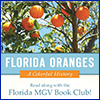 Join us this month for our live meeting with Erin Thursby, author of "Florida Oranges." We'll be live on Facebook on Friday, September 17 at 1 p.m. Whether you're new to Florida or a born and raised Floridian, there's a lot to learn about the history surrounding our state's citrus crops! "Florida Oranges: A Colorful History" covers Ponce de Leon's first groves in St. Augustine to the current citrus greening crisis, and much more. Learn more about the book and the MGV club.
Join us this month for our live meeting with Erin Thursby, author of "Florida Oranges." We'll be live on Facebook on Friday, September 17 at 1 p.m. Whether you're new to Florida or a born and raised Floridian, there's a lot to learn about the history surrounding our state's citrus crops! "Florida Oranges: A Colorful History" covers Ponce de Leon's first groves in St. Augustine to the current citrus greening crisis, and much more. Learn more about the book and the MGV club.
September in Your Garden
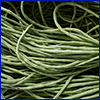 If you haven't already, it's time to prepare the fall vegetable garden. September opens the door to a larger number of edible choices. It's time to establish strawberry plants in North Florida. Divide and replant perennials and bulbs that have grown too large or need rejuvenation. Continue to monitor the lawn for signs of insect damage. Fall armyworms, chinch bugs, mole crickets, and sod webworms are still active this month.
If you haven't already, it's time to prepare the fall vegetable garden. September opens the door to a larger number of edible choices. It's time to establish strawberry plants in North Florida. Divide and replant perennials and bulbs that have grown too large or need rejuvenation. Continue to monitor the lawn for signs of insect damage. Fall armyworms, chinch bugs, mole crickets, and sod webworms are still active this month.
For more month-by-month gardening tips, check out the Florida Gardening Calendar. Three different editions of the calendar provide specific tips for each of Florida's gardening regions—North, Central, and South.
What's Going On?
If your Master Gardener Volunteer program or Extension office is having an event, be sure to share it with us.

